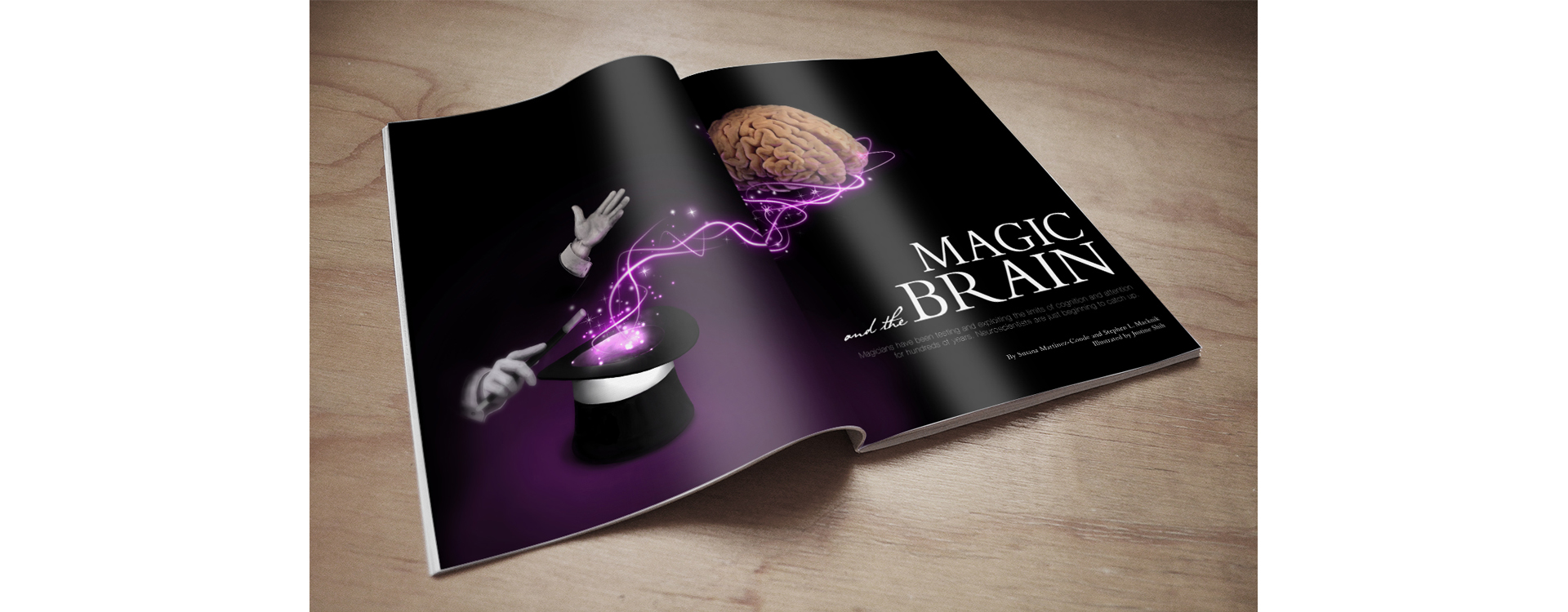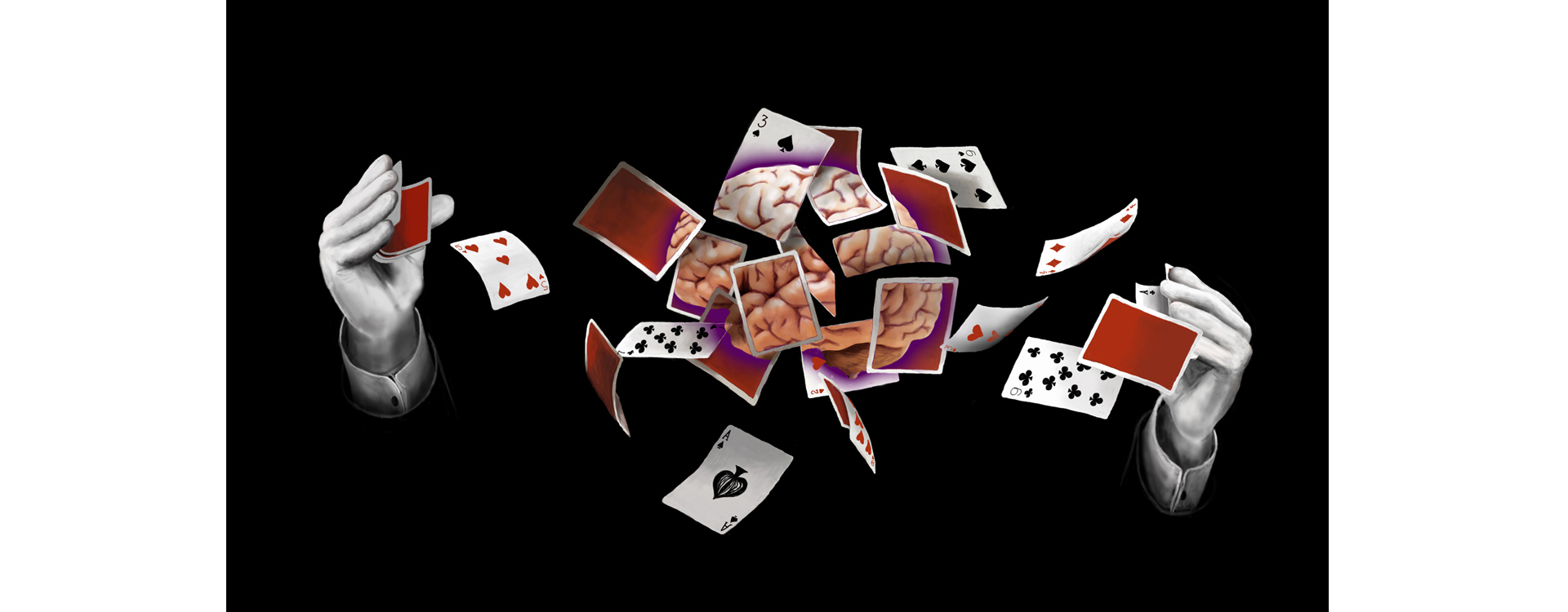Magic and the Brain
Conceptual Illustration, Layout Design
For this course project, illustrations were needed to represent a science article's content, as well as draw in the reader. As magic tends to naturally do just that, I went with well-known symbols of a magician. Dark backgrounds keep the illustrations enshrouded in a sense of mystery, as purple highlights the areas for your attention.
The borrowed article from Scientific American, Magic and the Brain, describes how magic tricks are not just tricks of the eye, but that they trace back to how our brains work in recieving information. The magician, knowingly or not, exploits the missing links when our brains are not fast enough to connect what we think we see with what actually happens, often resulting in filling in the blanks mistakenly.
The opening spread idea was the first sketch that I drew out, one out of many. If you look closely, neurons are part of the magic swirl, further tying together the two subjects at hand. The flying cards concept was partly inspired by movie-portrayed conspiracy theorists and their gathered information--seeing the bigger picture once all the layers of data are pieced together, a connection made that comes with an "Ah-ha!" moment, much like when experiencing a magician's clever illusion.
- Year: 2012
- Tech: Photoshop, InDesign



